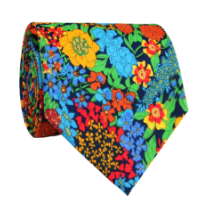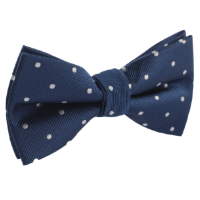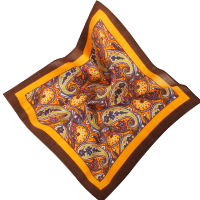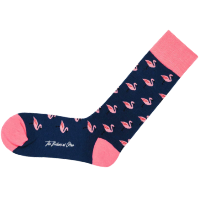The Evolution of Tie
The tie originally a modest piece of cloth, has undergone a remarkable transformation to become an emblem of elegance and fashion. This evolution is not just a story of fabric and design, but a narrative that intertwines with the changing tides of history and culture. Each era has left its indelible mark, influencing and reshaping the tie into what it is today: a pinnacle of men's fashion. As we journey through the historical progression of tie styles, we witness an intricate tapestry of societal trends, aesthetic shifts, and the ever-evolving definition of sophistication. This piece of attire, once plain and unassuming, now stands as a testament to the dynamic nature of fashion and its ability to encapsulate the essence of each epoch it passes through. 
The Birth of the Necktie
The evolution of the necktie, a quintessential element of modern fashion, traces its roots back to the 17th century. Initially conceived as a pragmatic accessory for soldiers, it served the functional purpose of protecting necks and fastening the top of their uniforms. However, its utilitarian origins soon gave way to aesthetic appreciation, as it caught the eye of the European nobility. The aristocrats of the time, known for their penchant for lavish and elaborate fashion, adopted and transformed this simple piece of cloth into a sophisticated emblem of elegance and social status. This transformative era marked the inception of what we now recognize as the classic necktie, symbolizing not only a sense of refinement but also a rich historical lineage that reflects the evolution of fashion across centuries. 
The Rise of the Cravat and Early Neckwear
The evolution of the necktie witnessed a pivotal moment in the 18th century with the introduction of the cravat, which laid the groundwork for the modern tie. This era was marked by a remarkable diversity in neckwear, showcasing an array of styles, fabrics, and methods of adornment. The cravat became a symbol of both social standing and individual fashion sense. It was an era characterized by bold experimentation and flamboyant designs, serving as a precursor to the more polished and sophisticated styles that would follow. This period in fashion history highlights the dynamic nature of neckwear, illustrating how it has been influenced by cultural trends and personal expression over time. 
The Industrial Revolution and Mass Production
The Industrial Revolution, a pivotal era of the 19th century, significantly transformed the landscape of manufacturing, especially in the realm of clothing accessories like ties. This period marked a shift towards mass production techniques, which made ties more readily available to a broader audience. During this time, there was also a notable expansion in the variety of neckwear, exemplified by the introduction of the bow tie and ascot. These additions illustrated the evolving fashion norms, where different styles of neckwear became associated with specific occasions and times of the day, reflecting the changing social and cultural dynamics of the era. The diversification in neckwear options served as a testament to the influence of industrial advances on fashion trends, making a lasting impact on men's attire. 
20th Century: The Golden Age of Ties
In the 20th century, ties experienced their golden age, evolving significantly in style and significance. This era, marked by the two World Wars, saw a shift in men's fashion towards practicality, with a focus on simplicity and functionality. The necessity of the times demanded less ornate and more utilitarian attire, influencing the design and use of ties. Following the war, there was a noticeable change. Ties became wider and adopted more vibrant colors and patterns. This transformation was a reflection of the era's newfound optimism and sense of freedom. The tie, once a symbol of strict formality, became an expressive accessory, mirroring the societal shift from the austerity of wartime to the prosperity and liberation of the post-war period. This evolution made the 20th century a definitive era for the fashion of ties, marking it as a time when they were not just a part of a man's wardrobe, but a statement of his place in a rapidly changing world.
The Skinny Tie: A Modern Revolution
The modern revolution in men's fashion was significantly influenced by the emergence of the skinny tie in the 1950s and 60s. Originally introduced as a bold, rebellious statement against the conservative norms of traditional fashion, the skinny tie represented a shift towards a more daring and individualistic style. Over time, this slender neckwear has evolved from being a symbol of counterculture to becoming an essential element in the contemporary man's wardrobe. Today, the skinny tie is synonymous with sleek style and contemporary charm, offering a refined yet modern touch to professional and casual outfits alike. Its enduring popularity underscores its versatility and the ongoing desire for fashion that combines classic elegance with a modern twist. 
The Era of Bow Ties and Formality
Bow tie stands as a timeless emblem of elegance and formality. This enduring association is masterfully captured in a collection of bow ties, each piece resonating with the historical essence of sophistication that the bow tie represents. These meticulously crafted accessories offer a diverse range of styles, suitable for various formal events, exemplifying the bow tie's evolution from a mere functional item to a distinguished symbol of refinement and style. The collection not only pays homage to the traditional aspects of the bow tie but also embraces contemporary interpretations, ensuring that each piece is both a nod to the past and a step towards the future of formal fashion. 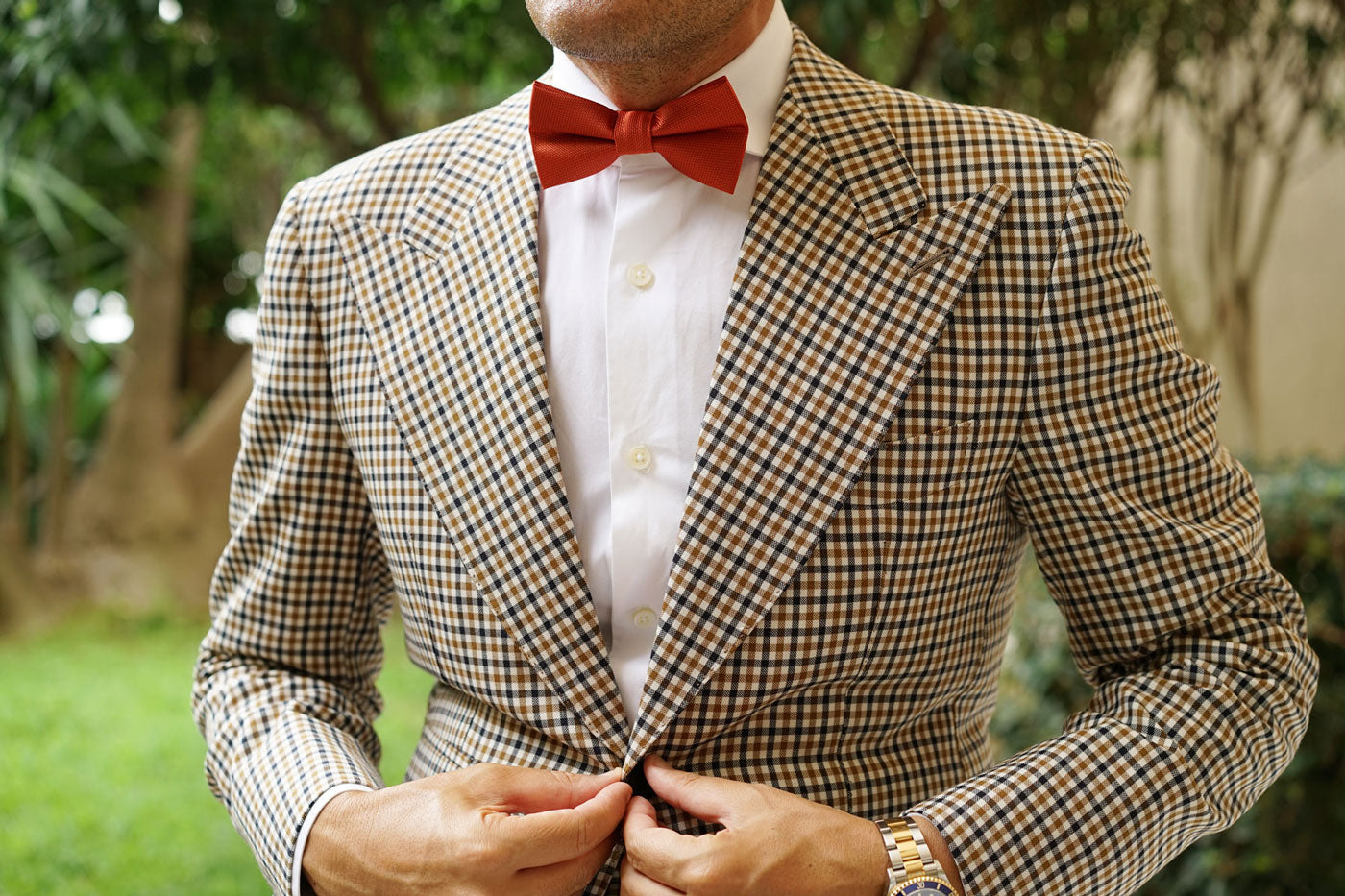
Diversity in Contemporary Tie Fashion
Diversity in contemporary tie fashion is a testament to the evolving nature of personal style and individual expression. In this modern era, the world of ties has expanded beyond traditional boundaries, incorporating a wide range of influences. We're witnessing a notable resurgence of vintage styles, where classic designs are being revived and reimagined for the contemporary wearer. Simultaneously, there's an enthusiastic embrace of bold patterns and vibrant colors, allowing individuals to make a statement and stand out. This blend of old and new, classic and daring, enables people to express their personality in a way that respects the age-old traditions of formal wear, yet breaks free to explore new fashion frontiers. Through this, contemporary ties have become more than just a part of attire; they are a medium of self-expression and an emblem of personal identity in a world that values diversity and uniqueness. 
Conclusion: Ties as a Timeless Fashion Staple
The tie has long stood as a timeless staple in men's fashion, its evolution serving as a testament to its unyielding presence. As the world of fashion has undergone numerous transformations, the tie has consistently retained its essence—a symbol of sophistication and an avenue for personal style expression. Throughout its history, the tie has adapted to various fashion trends, yet it has always maintained its core identity. It’s more than just an accessory; it's a statement piece that speaks to a man's character and his sense of style. Whether in a professional setting or a casual gathering, the presence of a tie adds a touch of elegance and personal flair, making it a quintessential element in the wardrobe of the style-conscious individual. This enduring appeal of the tie underscores its significance in the tapestry of fashion, firmly establishing it as a timeless and indispensable accessory.


